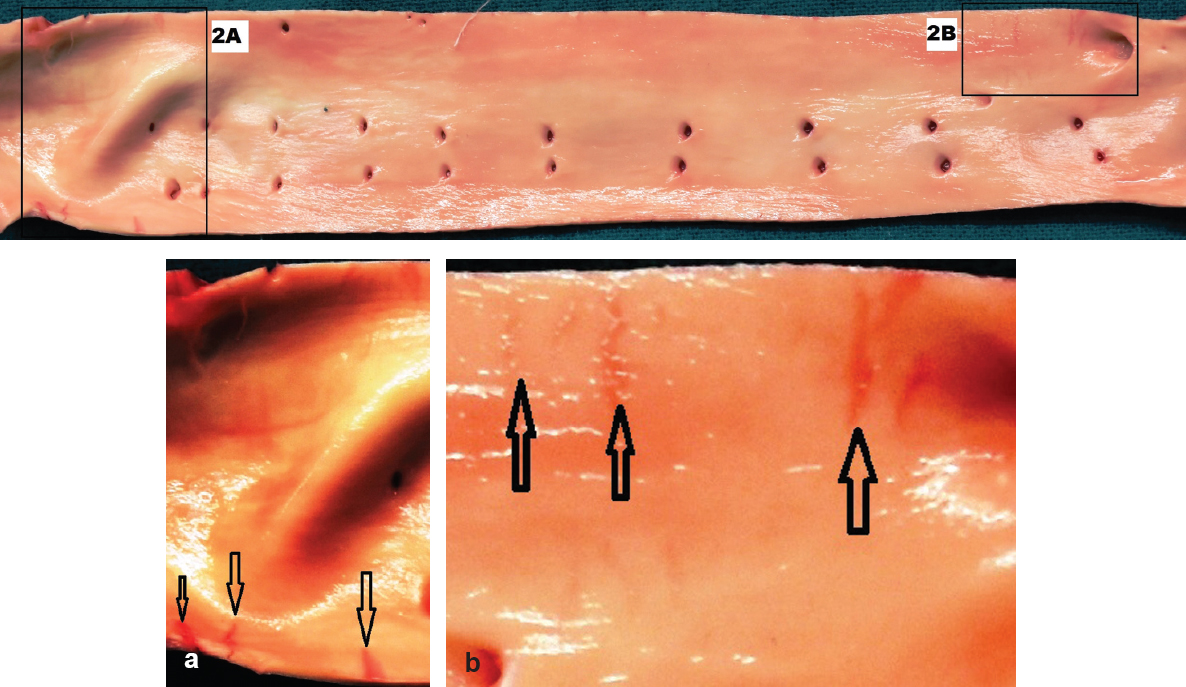Translate this page into:
Atypical presentation of intimal tear of aorta in a young deceased boy secondary to road traffic collision
Corresponding Author:
Ashish Saraf
Department of Forensic Medicine and Toxicology, All India Institute of Medical Sciences, Jodhpur, Rajasthan
India
v_ashish_saraf@yahoo.com
| How to cite this article: Saraf A, Ateriya N, Shekhawat RS. Atypical presentation of intimal tear of aorta in a young deceased boy secondary to road traffic collision. Natl Med J India 2019;32:52 |
A medicolegal autopsy was conducted on a 16-year-old boy who died in a road traffic accident. The deceased had sustained fatal injuries to the head and upper cervical spine. The calvarium showed a combination of fissure and comminuted fractures mostly in the anterior cranial fossa. Dissection of the neck by anterior approach revealed fracture and dislocation of C8-T1 vertebrae with accompanying contusions of corresponding spinal cord segments and anterior longitudinal ligament.
On removal of the organs by the Letulle technique, the abdominal aorta was found to be contused on the posterior aspect [Figure - 1]. On dissection of the aorta, multiple horizontally placed intimal tears were noticed 2.5 cm proximal to the bifurcation [Figure - 2]a and [Figure - 2]b.
 |
| Figure 1: Parallel contusions on the posterior aspect of aorta created due to pinching at intervertebral spaces |
 |
| Figure 2: 'Ladder-rung' intimal tears in the abdominal aorta; (a and b) close up of the injury |
The so-called ‘ladder-rung’ tears are intimal tears placed transversally and parallel to each other, created when the intra-aortic pressure increases suddenly. In forensic practice, such scenarios are seen in relation to road traffic accidents, especially when sudden deceleration was a major component of the accident. Aortic tears are unusual in the young, and the most common site of injury to the aorta is the isthmus, i.e. the area of the descending thoracic aorta below the left subclavian artery ostium. In our case, the deceased was riding a bike and was hit by a truck from behind. Although the patient died from craniovertebral injuries, the autopsy revealed the uncommon finding of intimal tears in the aorta at an unusual site. Such autopsy findings can be used to reconstruct the incident from a biomechanics point of view.
Fulltext Views
3,942
PDF downloads
1,000




